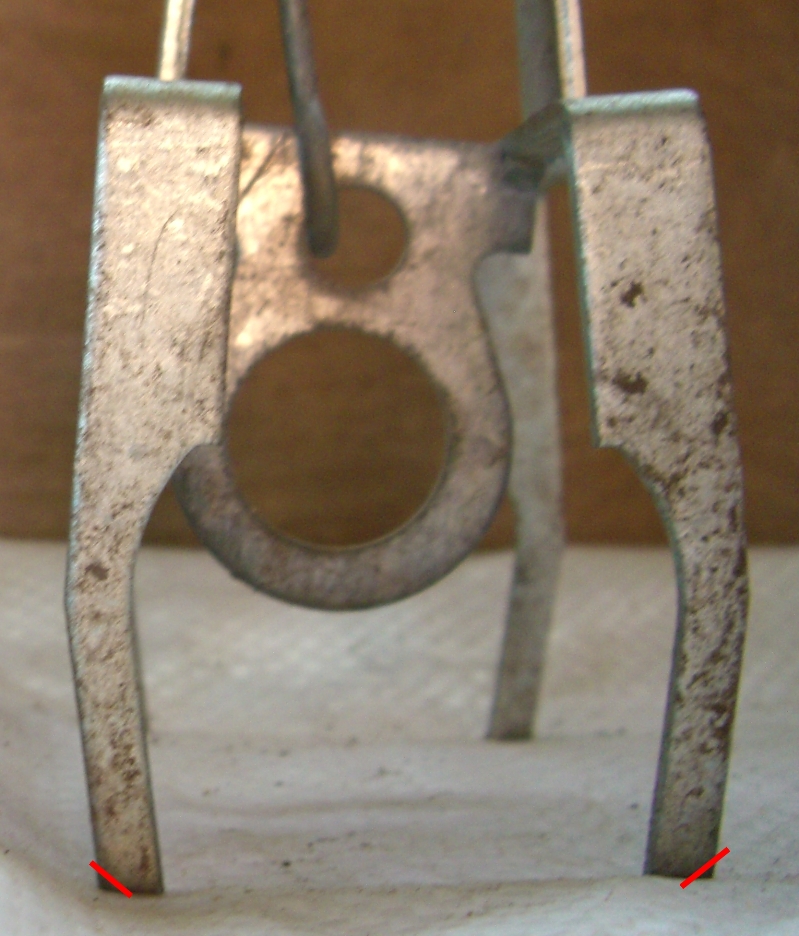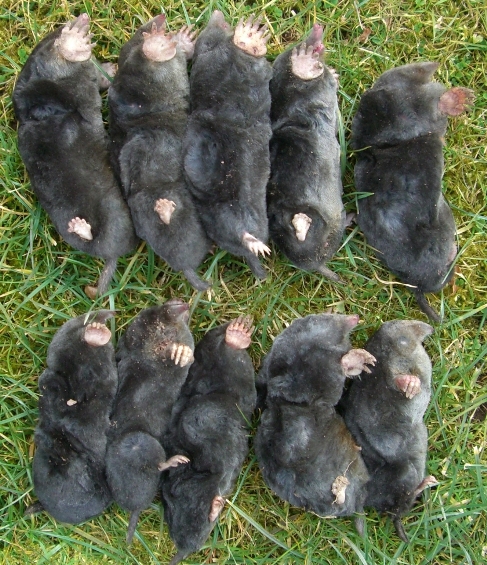|
||||
|
Mole Catching 2010 |
||||
|
Walcote Farm and local churchyard. |
||||
|
|
||||
|
Picture taken March 2nd. The first day I set the trap. Note the soft matted grass lying on the ground that is used for setting the trap. The trap is covered in sticky soil which is not ideal for mole catching. This particular trap was bought in the 1950's. |
||||
|
March 2nd. I have just started mole catching but it is still too wet for ideal conditions. I did catch 2 moles today with 4 traps set. Moles did not visit the other 2 traps set. |
||||
|
March 4th. I had been asked if I would catch the moles in the local churchyard. Today I set 2 traps that I had modified and in the afternoon, one trap had sprung with a mole caught. |
||||
|
March 5th. Second mole caught today from the same place as the first mole, in the churchyard. |
||||
|
March 6th. No more moles caught. Removed traps from churchyard as I believe there are no more moles to catch. |
||||
|
|
|
|||
|
The trap used in the churchyard was one that I had modified, putting a curve on the legs, then prising the jaws outward and grinding off and curving the outside corners as shown by the red lines. |
||||
|
March 6th. One mole caught today. I will have to find some new places to catch more moles. |
||||
|
March 8th. One mole caught today. |
||||
|
March 10th. Two moles caught today. So far counting the local churchyard, I have caught 8 moles. There has been only one place that I set a trap which was really too wet, that I did not succeed in catching a mole. I moved the trap to another location and caught the mole within three hours. Every location where I have caught these 8 moles, a mole was caught the very first time that the trap was triggered. That is how good the traps that I use are. Every trap that I have set in the fields, has been 100's of yards apart. I do not set two traps near one another, to hope for the best! |
||||
|
March 11th. Two moles caught today. Mole catching is almost finished for this year. I have no more areas to reset the traps. |
||||
|
|
||||
|
March 11th. Total number of moles caught so far this year is ten. Look at the different sizes of moles and see how large some of their front feet can be. |
||||
|
March 12th. One mole caught today. This is the third mole to be caught in the same place in 3 days. This is in a main run. The very wet weather that we have had over the winter period, moles can always find water underground, near to where they are active in the field. As the fields become drier, the moles are going to have to travel for water. This will be anywhere, where water can be found. A ditch, lake, river, etc. |
||||
|
I have now only one trap set on the farm. It is in a main run and will also catch moles coming from a neighbouring fields. |
||||
|
March 16th. Set a trap today, making 2 traps now set, because of finding mole activity which is not using the main run. I am trying out another type of trap. A trap that I have never used before a week ago. I have already caught one mole with it. |
||||
|
March 17th. Caught one mole today with the trap that I set yesterday. At first I thought I hadn't caught a mole because the trap was full of soil. I then found that I had to squeeze the trap handles together, to release the trapped mole before I could pull the trap out of the hole. What had actually happened, another mole, its mate, had dug around the closed trap. |
||||
|
March 18th. Yesterday I reset the trap in the same hole, where I caught the mole, but the hole was not quite how I wanted it, but I thought, this is what testing is all about, I will see if it works. Nine o’clock this morning, I found the trap had gone off without catching a mole. I reset it in a new place, and by noon today I had caught the mole. |
||||
|
I now again have only one trap set in a main run on the farm. The trap is set on the off chance that a mole might come as the run leads to water. |
||||
|
|
|
|||
|
The trap on the left is a different design than what I have been use to. The picture on the right shows it more clearly. The legs of the jaws are shorter and the setting ring is almost on the floor. To set this trap in the mole run, the setting ring must be at the same height as the other trap, about ¾ of an inch off the ground. The feet on the jaws are not in the bottom of the mole run but on a ledge at the side of the hole. This means that when the trap is triggered, the jaws close in mid air onto the mole and not rubbing along the bottom of the mole run. This could be better for wet ground conditions. I have caught 2 moles so far with this trap and each mole was caught at the first attempt. The trap does not need altering for mole catching, except when the chain breaks! However I do not like the type of spring on the trap as what I have learnt in a short time is that the spring needs oiling often. You really can feel a huge difference when squeezing the handles together, to set the trap when oiled, than on other traps shown on this website. |
||||
|
I have now caught 3 moles with this trap. The third mole at two attempts because I was testing the limits that I can go to in catching moles. The trap is not set now as I have not seen any new mole activity. |
||||
|
March 23rd. I have now caught the fourth mole with this trap, at the first attempt in a neighbour's garden. |
||||
|
March 29th. I have removed the last mole trap that was set on the farm as I have not caught a mole since March 18th. |
||||
|
----------------------------------- |
||||
| Webpage designed and produced by | ||||
| John Finnemore, Walcote Farm, Warwickshire. | ||||

